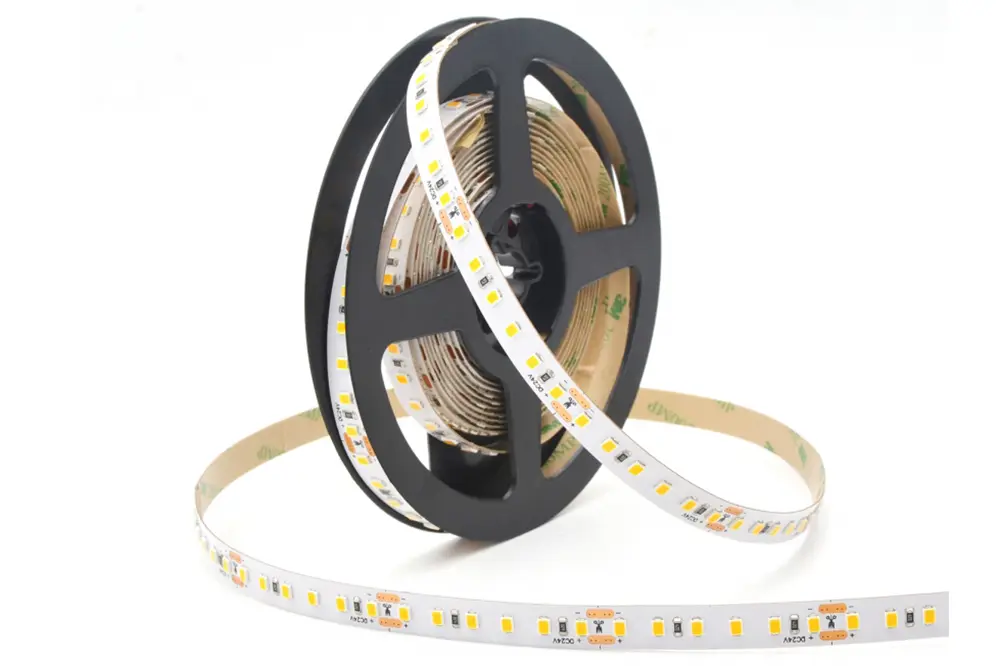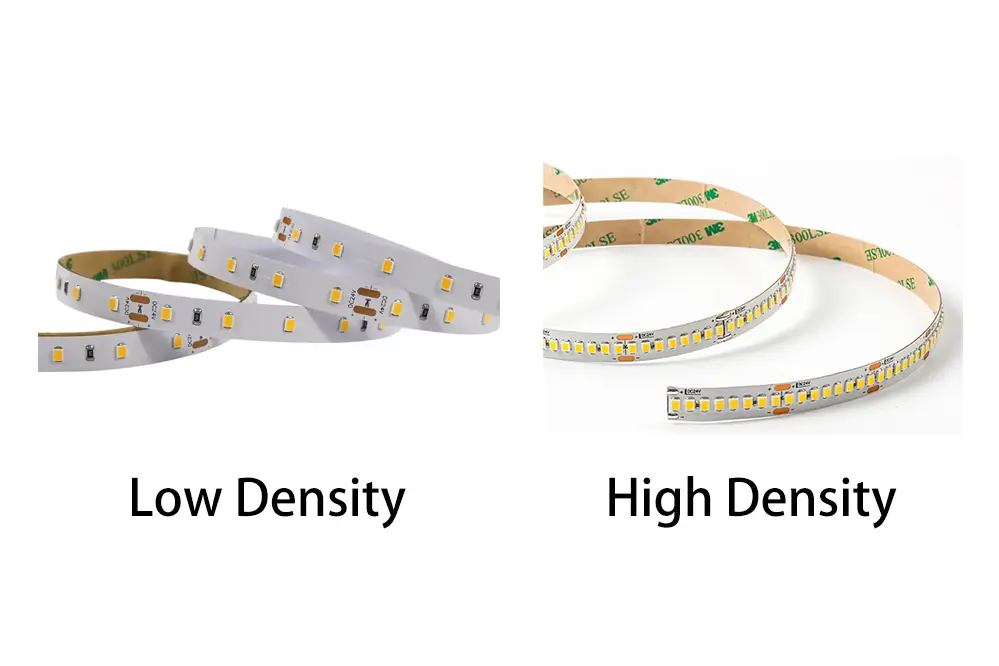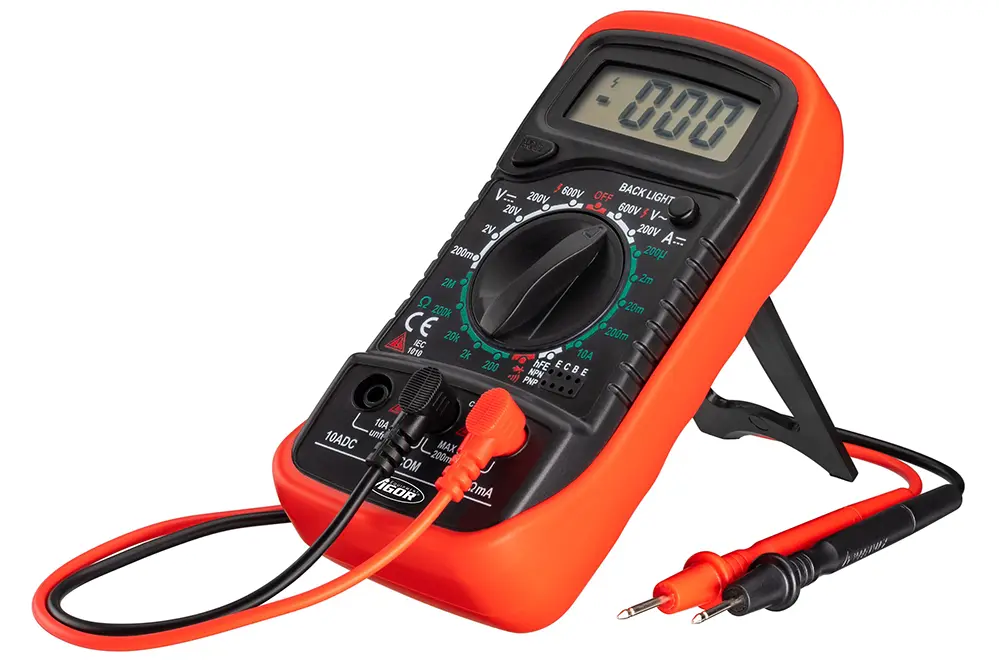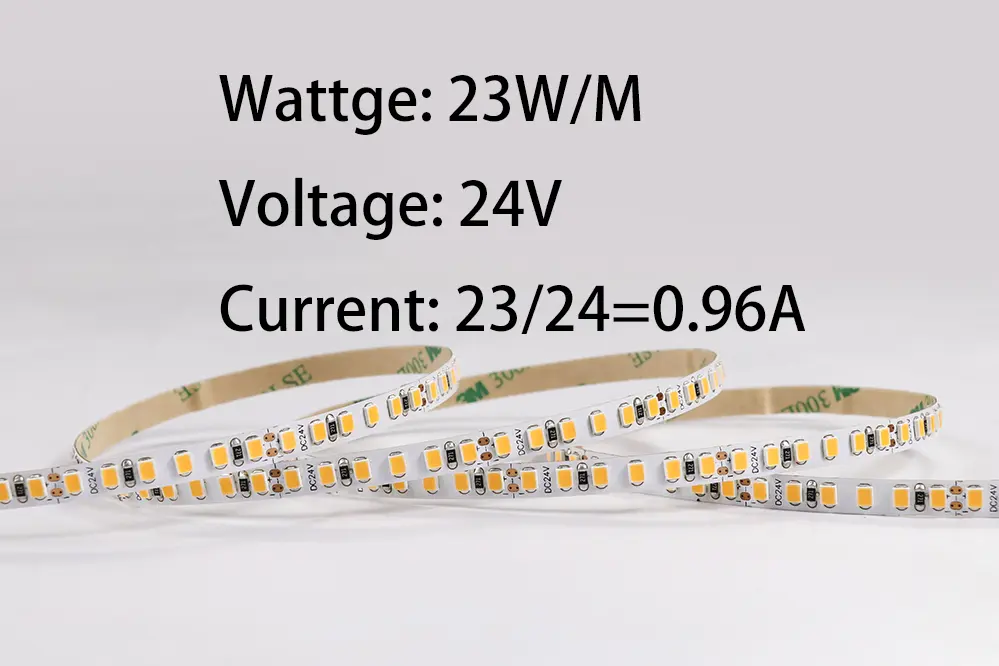LED strip lights have revolutionized the world of lighting, offering versatility, energy efficiency, and stunning visual effects. But have you ever wondered how many amps these innovative lights actually use? In this detailed analysis, we will unravel the mystery behind the electrical consumption of LED strip lights, providing you with valuable insights to optimize your lighting setup. So, whether you’re a lighting enthusiast or a professional in the industry, get ready to delve into the fascinating world of LED strip lights and discover the answer to the burning question: how many amps do LED strip lights use?
Now, before we dive into the nitty-gritty details, let me introduce myself. I’m Tom, and I’ve been immersed in the LED lighting industry since 2005. Over the years, I’ve gained a wealth of knowledge and hands-on experience, allowing me to become a trusted authority in the field. With a passion for LED technology and a commitment to providing accurate information, I’ve meticulously crafted this blog post to help you understand the intricacies of LED strip lights’ electrical consumption.
So, why should you continue reading? Well, this blog post is not just another run-of-the-mill article. It’s a comprehensive analysis that goes beyond the surface-level information you may find elsewhere. We’ll explore the factors that influence the amperage of LED strip lights, debunk common misconceptions, and provide practical tips to optimize their usage. Whether you’re planning a residential lighting project or seeking professional advice, this article will equip you with the knowledge you need to make informed decisions.
Let’s dive right in! Together, we’ll unravel the mysteries of LED strip lights’ electrical consumption and empower you to create stunning lighting setups while maximizing energy efficiency. Get ready to discover the fascinating world of LED strip lights and gain a deeper understanding of how many amps they truly use.
Defining LED Strip Lights

LED strip lights are a form of illumination known for their versatility and ease of installation. These lighting solutions consist of numerous Light Emitting Diodes (LEDs) arrayed on a flexible circuit board, enabling them to contour along various surfaces, fit into tight spaces, and provide continuous, linear light.
Beyond mere decorative purposes, LED strip lights serve in practical applications ranging from task lighting to complex architectural accents. They come in various color temperatures and levels of brightness, allowing for customization tailored to the desired ambiance or utilization. Adhesive backing and the ability to cut the strips to size render LED strip lighting particularly user-friendly and adaptable for numerous environments.
The Basics of LED Technology
LEDs convert electricity directly into photons of light, exhibiting remarkable efficiency compared to traditional lighting.
A single LED can emit up to 303 lumens per watt, demonstrating unparalleled efficacy in its class.
As solid-state devices, LEDs leverage semiconductors to create light, eliminating the need for filaments, which substantially enhances their lifespan and reliability.
Their design allows for minimal heat production and superior energy conversion, where the majority of the power is channeled into visible light, with less waste as heat.
Strip Light Varieties and Features
LED strip lights fuse adaptability with innovation, featuring variable color outputs, dimmability, and waterproof options to suit diverse functionalities.
Different LED densities impact both brightness and power consumption of strip lights.
High CRI (Color Rendering Index) variants reveal colors more accurately, ideal for spaces where hue authenticity is critical.
With smart connectivity, LED strips can now be controlled remotely, providing unrivaled convenience and customization.
Cut-points and solder pads offer discrete segmentation allowing for precise length adjustments, ensuring seamless integration into any design layout.
Moreover, various voltage options cater to different needs; from subtle accent lighting to robust commercial installations, there is a fitting choice for every scenario.
Amp Usage Explained
When calculating the amperage of LED strip lights, it’s essential to recognize the correlation between the LEDs’ power demands and the corresponding electrical current expressed in amperes (amps). This understanding is foundational to ensuring appropriate power supply and avoiding overloading circuits.
To determine the amp draw, one must consider the total wattage per meter of the LED strip and divide this by the voltage level at which the strip operates. As the length of the strip increases, so too does the cumulative wattage, leading to a proportionate rise in the required amperage for safe and effective functioning.
Remember that “ampere-hour” (Ah) or “milliampere-hour” (mAh) is also a critical metric when working with battery-operated LED strips, as it indicates the battery’s capacity to deliver the requisite amperage over time.
Understanding Electrical Terms
Electrical terms are critical in assessing the performance and compatibility of LED strip lights with power sources.
- Voltage (V): The potential difference that drives electric current through a circuit.
- Current (A): The flow of electric charge, quantified in amperes or amps.
- Wattage (W): A measure of electrical power, resulting from voltage and current.
- Ampere-hour (Ah): The charge capacity, indicating how long a battery can supply a specific current.
- Watt-hours (Wh): The energy usage over time, providing a picture of long-term power consumption.
Understanding wattage and its relation to current is essential for LED strip lighting.
Calculating the correct amperage is crucial to prevent overloading and ensuring longevity of LED strip lights.
Calculating Amps for LED Strips
To begin the calculation process, identify the LED strip light’s wattage per meter. This specification is commonly provided by the manufacturer and forms the foundation of our ampere demand analysis.
Once the wattage per meter is known, divide this value by the voltage of the power supply—typically 12V or 24V for LED strip lighting. The resulting figure represents the current, in amperes, that each meter of LED strip will require. This step is foundational, converting a known wattage to the required current for safe and effective operation.
It is also essential to take into account the total length of the LED strip that will be used. Multiply the current per meter by the total meters of LEDs to obtain the overall amperage required for your lighting project. This helps in determining the appropriate size of the power supply needed to operate the strips without risk of underpowering or excessive load.
For large-scale or complex installations, considering the possibility of voltage drop across long runs is important. To mitigate this, a higher capacity power supply may be needed, or the strips may need to be wired in a parallel configuration to ensure consistent brightness and performance. Understanding these nuances can prevent operational issues and maintain the integrity and longevity of your LED lighting setup.
Factors Influencing Amp Consumption
The intricacies of amp consumption in LED strip lighting extend beyond mere wattage and encompass a myriad of variables that directly impact electrical flow. The density of LEDs per meter constitutes a significant determinant, wherein higher densities typically command increased amperage. Simultaneously, the chosen color or color temperature of the LEDs can alter current draw, with white or tunable-white LEDs often necessitating more power than their single-colored counterparts. Furthermore, the efficiency of the LED chip itself plays a pivotal role; advancements in chip technology can result in lower energy requirements for equivalent light output. The presence of additional circuitry for control and dimming functions further modulates demand on the power supply. Understanding these factors is instrumental in calculating an accurate estimation of amperage for a particular LED strip lighting application, thereby ensuring both optimal functionality and energy efficiency.
Impact of Voltage and Wattage
LED strip lights exhibit diverse amp draw behaviors influenced by their voltage and wattage specifications.
- Voltage: Higher voltage LED strips (e.g., 24V) often have a lower amp draw compared to lower voltage strips (e.g., 12V) for the same length, due to reduced resistance in the electrical circuit.
- Wattage: The wattage per unit length of the LED strip determines the total power consumption, which is directly proportional to the amp draw.
- Efficiency: Technological advancements in LED efficiency can lead to a decrease in wattage without compromising luminosity, effectively reducing amp draw.Careful consideration of these factors ensures energy-efficient design and compatibility with power supplies.
Dimming and control circuitry embedded within LED strips also have implications for amp draw and must be factored into system design.
The Role of LED Density and Strip Length

LED density and strip length directly influence the ampere usage of LED strip lights.
- LED Density: The number of LEDs per meter impacts the amperage, with higher densities consuming more amperes.
- Strip Length: Longer LED strips will draw more amperage due to the increased number of LEDs.
- Efficiency: Newer LED technology allows for higher luminosity with less ampere draw, even in high-density configurations.
- Power Distribution: Adequate power supply and distribution prevent voltage drop across extended strip lengths.
As LED density increases, so does the power requirement to maintain luminosity across the strip.
Accurate calculation of amperage is essential for ensuring that LED strip lights function reliably without overloading the power supply.
Calculating and Managing Energy Use
When managing the energy consumption of LED strip lights, a precise calculation of the amp draw is critical. This involves multiplying the strip’s wattage per meter by the total length of the strip in meters, and then dividing by the voltage supply to ascertain the total amperage. This calculated value must align with the power supply’s capabilities, ensuring that the load does not surpass the supply’s rated amperage.
In addition to determining the overall power requirements, it’s imperative to consider the possible fluctuations in energy consumption that may occur with variations in intensity, color changes, or dynamic lighting effects. A power supply with a buffer above the calculated amperage can accommodate such variances, which is particularly crucial when dimming controls are in use.
Tools for Measuring Electricity Use

Amperage is fundamental to LED strip lighting integrity.
To monitor energy usage accurately, various instruments are indispensable. Precision in these measurements is paramount—a necessity facilitated by the utilization of current meters, also known as ammeters. For LED strip lights, clamp meters are particularly efficacious, allowing for current measurement without interrupting the circuit. Furthermore, in-line ammeters can be incorporated directly into the circuit for continual monitoring.
A reliable clamp meter is an electrician’s ally.
Multimeters provide another avenue for analysis—they measure voltage, current, and resistance. When affixed with an appropriate setting, these tools can measure the current flowing through LED strip lights, offering insights into energy consumption patterns and efficiency. However, interpreting these readings requires technical acumen.
Infrared thermometers, while not direct electricity measurement tools, provide indirect assessments by detecting heat signatures indicative of electrical overloads. These overloads are often correlated with excessive current flows, prompting a more detailed examination of amperage usage.
Advancements in smart technology further the field, yielding electricity usage monitors with real-time capabilities. These sophisticated devices interface seamlessly with ledger systems, automating calculations and archiving data for future analysis. As of 2023, these systems are becoming increasingly integral in the strategic deployment of LED strip lighting within various domains. Professional grade instruments like these ensure compliance with the stringent standards of electrical efficiency and safety.
Tips for Energy-Efficient LED Usage
Optimize LED layout to prevent wasteful overlaps.
When designing an LED installation, spatial efficiency is paramount. An optimal layout should avoid unnecessary overlaps and redundancies, ensuring each LED strip serves a purpose without contributing to the waste of electrical resources. Furthermore, aligning the LEDs to maximize the use of natural light can considerably reduce the need for artificial illumination.
Choose higher-quality LEDs for better efficiency.
Select LEDs with higher luminous efficacy – measured in lumens per watt.
Implement a rigorous maintenance schedule for LEDs.
Routine maintenance can forestall energy losses – keeping LEDs at peak performance.
Utilize dimmers and sensors to automate energy savings.
Incorporating dimmers and motion or daylight sensors into your LED lighting system can dramatically cut energy consumption. By adjusting the light output to the required level or activating the LEDs only when necessary, these devices can lead to significant energy savings. Lifestyle adjustments post 2023 suggest an increased reliance on such smart lighting solutions.
FAQs
Can LED strip lights overload an electrical circuit?
While LED strip lights are energy-efficient, they can overload a circuit if the collective amperage of the strip lights and other connected devices exceeds the circuit’s capacity. Careful calculation and distribution of load are crucial to prevent tripping breakers or potential fire hazards. Hence, the importance of understanding the amp usage of each LED strip and the overall electrical system cannot be overstated.
What factors affect the amp usage of LED strip lights?
The primary determinants of amp usage in LED strip lights include their voltage, wattage per unit length, and the total length of the strip being used. Depending upon these variables, the amperage will scale accordingly, thereby influencing the overall demand on the power supply.
How do you calculate the amperage requirement for LED strip lights?
To ascertain the necessary amperage for LED strip lights, you’ll need to divide the total wattage by the voltage. If you are using a 12V system, and your LED strip consumes 60 watts, it would require 5 amps of current to operate effectively.
Does the color or brightness of LED strip lights affect amp draw?
The hue and intensity of LED strip lights do influence their power consumption. Typically, brighter and more saturated colors will draw more current, consequently increasing the amperage required. However, using a dimmer can modulate this consumption, offering both ambiance and energy efficiency.
Are there differences in amp usage between various LED strip brands?
Different manufacturers may produce LED strips with varying power demands based on their technology and quality standards. Hence, review product specifications meticulously. As of the latest update in 2024, the market has seen a diversification of options, with efficiency and longevity forming key differentiators in product selection and application in residential and commercial environments.
What current is needed for LED strips?
When it comes to LED strips, it is important to understand the current required for optimal performance. The current needed for LED strips varies depending on the specific type and configuration of the LEDs.
LED strips typically require a low DC (direct current) voltage to operate. The specific current requirement is usually expressed in milliamperes (mA) or amperes (A). This current rating indicates the amount of electrical current that the LED strip needs to produce the desired brightness.
To determine the appropriate current for your LED strip, you can check the specifications provided by the manufacturer. The current rating will be specified for each individual LED or for a group of LEDs on the strip. It is important to adhere to these specifications to ensure proper operation and avoid damaging the LEDs.
In some cases, LED strips may have a built-in current regulator that automatically adjusts the current to the optimal level. This feature can help simplify the installation process and ensure consistent brightness across the entire strip.
When designing a lighting setup with LED strips, it is crucial to consider the power supply that will be used. The power supply should be capable of providing the necessary current to meet the requirements of the LED strip. It is recommended to choose a power supply that can safely handle the maximum current needed by the LED strip to prevent overloading or damaging the components.
In summary, the current needed for LED strips will depend on the specific LEDs used and their configuration. Checking the manufacturer’s specifications and ensuring a suitable power supply are important steps to ensure the optimal performance and longevity of your LED strip lighting setup.
How many amps can an LED handle?
An LED can handle a specific amount of current, measured in amps. The maximum current that an LED can handle depends on various factors such as its size, design, and materials used. It is important to ensure that the current flowing through an LED does not exceed its maximum rating to avoid damaging or degrading its performance.
LEDs typically have a specified forward current rating, which indicates the maximum continuous current that the LED can safely handle. This rating is determined during the manufacturing process and is based on the LED’s internal structure and thermal management capabilities. Exceeding this forward current rating can lead to overheating, which may result in a decrease in brightness, color shift, or even permanent damage to the LED.
To determine the appropriate current for an LED, it is necessary to refer to its datasheet or technical specifications provided by the manufacturer. These documents usually provide information about the LED’s recommended operating conditions, including the forward current range. It is crucial to adhere to these guidelines to ensure optimal performance and longevity of the LED.
In some cases, LEDs are designed to handle higher currents for short durations, such as pulse current ratings. These ratings indicate the maximum current that the LED can withstand for a brief period, usually in the range of microseconds or milliseconds. Pulse current ratings are relevant in applications where LEDs are subjected to high-frequency switching or pulsed operation, such as in some lighting systems or communication devices.
In conclusion, the maximum current an LED can handle depends on its design and specifications. It is essential to consult the manufacturer’s documentation to determine the appropriate operating current for an LED to ensure its longevity and optimal performance. Exceeding the recommended current can lead to diminished performance or permanent damage to the LED.
What’s the typical LED strip amp draw?
LED strips typically have a specific amp draw, or current consumption, which determines the amount of power they require to function. The amp draw of an LED strip is influenced by factors such as the length and type of LEDs used, as well as the brightness level.
The typical amp draw of an LED strip can vary depending on these factors. For instance, a shorter strip with lower intensity LEDs may have an amp draw of around 0.6 to 1 amp per meter. On the other hand, a longer strip with higher intensity LEDs may have an amp draw of 1 to 2 amps per meter.
It’s important to consider the power supply capacity when working with LED strips, as it should be capable of providing enough current to meet the amp draw requirements. Using an undersized power supply can result in dimming or flickering of the LEDs, while an oversized power supply may lead to inefficiency and unnecessary energy consumption.
In addition, it’s worth noting that advancements in LED technology have led to more efficient strips with lower amp draws. Manufacturers are continuously improving their products to reduce power consumption, resulting in LED strips that offer better performance and energy efficiency.
As technology progresses, we can expect the typical amp draw of LED strips to continue decreasing, allowing for more cost-effective and environmentally-friendly lighting solutions in various applications.
Do all LED strips use the same amps?
LED strips can vary in the amount of amps they use, depending on various factors such as the length and brightness of the strip, as well as the individual LEDs used. The amps, or electrical current, required for an LED strip is typically specified by the manufacturer and can be found in the product specifications or datasheet.
When selecting an LED strip, it is important to consider the power supply and controller that will be used. The amps required by the LED strip should match or be within the capabilities of the power supply and controller to ensure proper functionality and to avoid any potential damage to the components.
Different types of LED strips may have different amp requirements. For example, a high-brightness LED strip may require more amps compared to a standard or low-brightness strip. Additionally, longer LED strips may also require more amps to provide sufficient power to each LED along the strip.
It is recommended to refer to the manufacturer’s specifications and guidelines to determine the appropriate amp requirement for a specific LED strip. This information will help in selecting the proper power supply and controller, and ensure optimal performance and longevity of the LED strip.
Should I use a resistor with LED strips?
Using a resistor with LED strips is a question that often arises when working with these lighting fixtures. The answer depends on several factors, including the specific LED strip and the power source being used.
In some cases, LED strips come with built-in resistors that regulate the current flow and prevent damage to the LEDs. These types of LED strips are designed to work with a specific voltage and can be directly connected to the power source without the need for additional resistors.
However, not all LED strips have built-in resistors. If you are using a bare LED strip without a built-in resistor, it is crucial to determine the appropriate resistor value to protect the LEDs and ensure proper operation. Calculating the resistor value involves considering the forward voltage of the LEDs and the desired current flow.
It is important to note that using the wrong resistor value can result in insufficient current flow, leading to dim or non-functional LEDs. On the other hand, using a resistor with too low a value can cause excessive current flow, potentially damaging the LEDs.
To ensure the correct resistor value, it is recommended to consult the datasheet or specifications of the LED strip. Additionally, using online LED resistor calculators can provide a convenient way to determine the appropriate resistor value based on the given parameters.
In summary, whether or not to use a resistor with LED strips depends on the specific LED strip and its built-in resistor. If the LED strip has a built-in resistor, it can be directly connected to the power source. However, if the LED strip does not have a built-in resistor, it is essential to calculate the appropriate resistor value to ensure the proper functioning and longevity of the LEDs.
Conclusion
In summary, LED strip lighting is complex.
When planning LED strip light installations, myriad factors influence total amperage. The project’s scale, selected voltage, and specific light characteristics all dictate the electrical current necessary. Notably, the amperage is pivotal in ensuring the long-term stability and functionality of the lighting system.
LED strip lights’ amperage is critical for safety.
Recognize the importance of proper calculation – it protects your investment. Overlooking the precise amperage needs can result in overheated circuits, compromised performance, or even safety hazards. Ergo, precision in planning and execution is non-negotiable.
Investing in efficient products safeguards future.
The effort to understand and anticipate the amperage demands of LED strip lights reflects the meticulous care that distinguishes seasoned professionals. In this rapidly evolving sector, staying attuned to advancements and regulatory changes is crucial. Your choice today shapes the operational efficiency and sustainability of your lighting solutions tomorrow.





